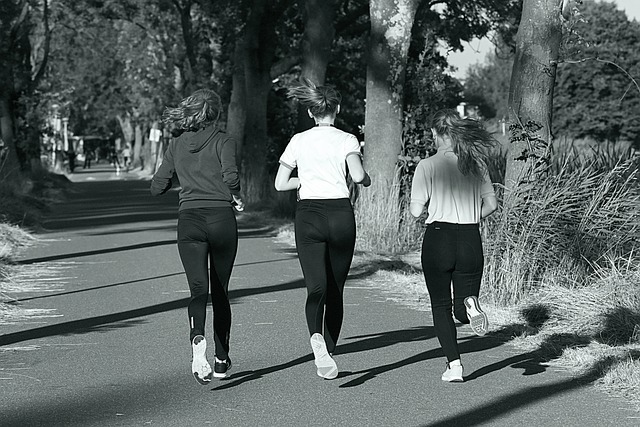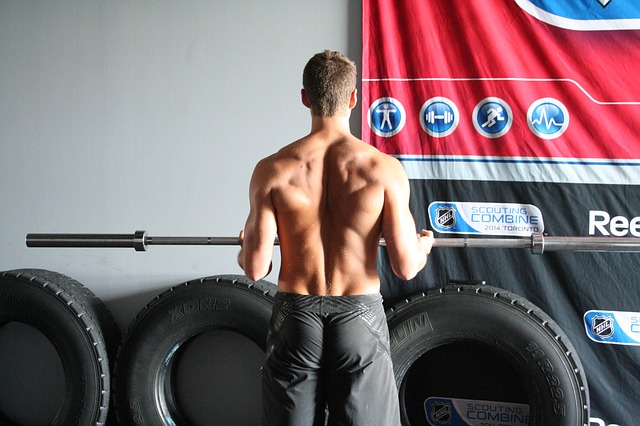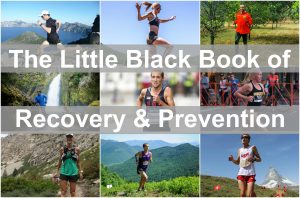Big butts, I cannot lie: they’re great for runners. But we often neglect glute strengthening exercises – and that’s leaving a lot of runners injured.

The glutes are really made up of three separate muscles that make your booty the largest muscle group in the body:
- Gluteus maximus (responsible for extending the hip joint)
- Gluteus medius (responsible for hip abduction and thigh rotation)
- Gluteus minimus (responsible for hip abduction and thigh rotation)
Because of their size, these muscles can produce a lot of force. In fact, they’re one of the primary muscles that help you run fast. Like quads for cyclists, the glutes are a distance runner’s primary source of power.
Strong glutes also center the pelvis and give you a strong, stable foundation upon which to generate speed.
But runners neglect their glutes in three critical ways:
- A lack of glute strengthening exercises
- Training mistakes
- Poor lifestyle habits
In this article, you’ll learn the importance of these muscles, mistakes that will weaken your butt, and exercises for glute strengthening.
Why is Glute Strength So Important?

The impact of a strong butt can’t be denied: you’ll be a healthier, happier, faster runner.
As Dr. Jordan Metzl, author of Running Strong, has said numerous times:
A strong butt is the key to a happy life!
But more specifically, glute strengthening exercises have two major advantages. First, you’ll improve your ability to generate speed. And second, you’ll be far less likely for a major running injury.
The speed benefit is clear: as the largest muscle group in the body, they’re capable of producing a lot of power. They can generate force, speed, and propel you to your next big Personal Best.
Injury prevention is the benefit you’ll probably experience first and most dramatically. That’s because it only takes a few short weeks of dedicated glute strengthening to start noticing improvements.
First, you’ll feel that your form is more efficient and powerful. Then, you’ll notice how you have fewer niggles and aren’t as tired on your longest efforts.
Over time, your injury rate will go down and you’ll end up a faster, healthier runner.
How Runners Neglect the Glutes
Runners neglect their glutes through training, lifestyle, and strength habits. Let’s explore each one so you can address any shortcomings in your training.
Training Mistakes
How you structure your running has a big impact on the strength of your backside. If your training is mostly easy running, you’re leaving a lot of strength and economy on the table.
Add in these fundamental elements of sound training for some extra glute strength:
- Running form drills
- Hilly runs (and formal hill workouts)
- Sprints / Speed development
Drills, hills, and sprints prevent runners from running “lazily” with poor form, sloppy mechanics, and loose joints. They promote muscle tension, build strength, and reinforce proper mechanics.
From a running perspective, these additions will help you feel more athletic with a stronger butt in just a few weeks.
Poor Lifestyle Habits
Your butt can be detrained by what you do outside of running just as easily as what you do while training.
Runners who’ve gone through our injury prevention material understand that a modern lifestyle is often incompatible with running performance. And the top culprit is our affinity for sitting for so many hours of the day.
Sitting for prolonged periods of time weakens the gluteal muscles, stretches them, and trains them to be inactive for long stretches of time.
It’s why I wrote an adjustable standing desk review and filmed a video about the effects of prolonged sitting:
Vary the positions you put your body into throughout the day (including your rear end) and you won’t have as many glute problems.
No Strength Training
Strength training is the most direct form of glute strengthening for runners. While sprints, hills, and drills get you partway there, there’s simply no substitution for strength training.
If you don’t have any experience with weightlifting or you don’t have access to a gym, bodyweight exercises are a great way to boost your strength with virtually no equipment.
Rather than memorizing a lit of exercises, it’s best to follow a single routine for simplicity. The ITB Rehab Routine focuses on the glutes (and hips) and is a very running-specific strength routine:
Commit yourself to 10-20 minutes of bodyweight strength exercises after every run and you’ll be a stronger, more athletic, and less injury-prone athlete.
It’s no surprise that when I interviewed 9 elite runners on their favorite prevention strategies, strength training was a top choice!
Glute Strengthening Exercises for Beginners
Some of the best glute strengthening exercises for runners include:
- Squats
- Single-leg deadlifts
- Single-leg squats
- Bridges
- Single leg hip thrusts
- Side leg raises
- Clam shells
But if you’re brand new to any kind of strength work, let’s keep things simple. To get you started, here is a progression that outlines a series of four glute strengthening exercises for runners:
The exercises in this short video are:
- Double-leg bridge
- Double-leg bridge with alternating leg lifts
- Marching Bridge
- Single-leg hip thrusts
As you complete them, each exercise becomes increasingly difficult. By going through this set of glute exercises, you’ll find out the limits of your strength.
If they’re easy and you can perform these exercises with good form, you’re probably ready for weightlifting exercises in the gym.
But if they’re harder than they look, stick with bodyweight training for a few months before heading into the weight room.
It’s Not Just About Strength
Yes, it’s great to lift heavy weights in the gym to build a strong backside. A stronger butt is a stronger runner.
But absolute strength is not our main goal. Rather, it’s glute activation: the ability to properly recruit and use those glute muscles is far more important.
This means we must focus on glute function by using our glutes during our sport (running):
- Running hilly terrain
- Performing regular form drills
- Running hill repetitions and/or sprints
- Avoiding prolonged sitting
- Sprinting regularly
- Dynamic warm-up exercises pre-run
These activities, taken together, make a strong, athletic, capable, fast athlete. It’s the entire package, not a simple routine performed once or twice per week.
If you’ve experienced more injuries than you’d like recently, a series of glute strengthening exercises for runners can be a worthy addition to your training. But always remember to include the training and lifestyle factors that promote sound glute function too!
Get More Prevention Resources
Glute strength is a primary concern for injury-prone runners. These big muscles control and power the running stride.
If there’s a problem with your mechanics, there’s an excellent chance it can be traced back to poor glute strength or function.
Start with these exercises to determine how strong you are so you can run healthy (and faster!).
But of course, injury prevention is about a lot more than strengthening the gluteal muscles. The training you do is arguably even more important to whether or not you’ll stay healthy.
So I want to give you a free book: The Little Black Book of Prevention & Recovery. You’ll hear from:
- Olympian Dathan Ritzenhein

- Pro triathlete Kelly O’Mara
- Leadville winner Devon Yanko
- Ultrarunner Ian Sharman
- OCR Phenom Amelia Boone
- Trail rockstar David Roche
- Mountain Runner Andy Wacker
The advice given by this field of elite athletes is often different than what you’ll hear from mainstream sources.
These are the runners covering 100+ mile training weeks and pushing their bodies to the limit.
They know what it takes to stay healthy.
Download the book now (it’s free) to learn all of their strategies – so you can prevent your next injury.